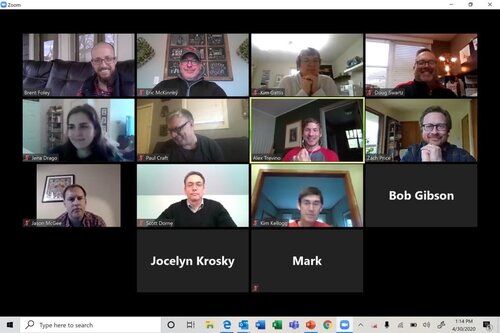Educator Round Table Discussion

May 28, 2020
Author: Jena Drago, TRIAD Project Associate
A few weeks ago, the TRIAD team hosted a virtual round table discussion for educators and administrators around Columbus to share the impact the COVID-19 Pandemic has had on their schools. To begin this discussion, Brent Foley (Partner, TRIAD) prompted the discussion with one over-arching question: What are challenges and opportunities you are facing during and transitioning through the COVID-19 Pandemic?

To distill the information, discussion topics were broken down into four main topics.
TECHNOLOGY

At the forefront of the discussion, participants shared technology’s extreme benefit in all this. Technology has provided student-to-teacher face-to-face interaction without physical contact via computers, allowed for creative lesson planning, and increased architect-client interaction via video conferencing. Scott Dorne (Westerville City Schools) mentioned that he is enjoying seeing live changes to building projects via Zoom on weekly meetings with the TRIAD team and intends to continue these virtual meetings in the future. Although, these opportunities are perhaps overshadowed by the larger challenges educators are facing: How do we ensure connectivity to all students? Being unable to connect to students (due to no internet connection and/or no device) poses a barrier to instruction. This raises questions about the inequity divide growing even greater during this pandemic. What happens to students who lose valuable instruction due to their lack of connectivity?
Facilities
So how does all this impact the future classroom? This brings us to what the TRIAD team sees as our constant challenge (and opportunity): How do we design the best classroom for tomorrow, today? As the discussion moved to facility-implications of the pandemic, administrators discussed potential shifts in the building they are seeing. Perhaps entries and exits might change for students and staff to ensure safe entry and departure. How does this impact class size (and classroom size)? Handwashing stations may need to be set up while communal drinking fountains become blocked off for all students and staff.
Curriculum
In thinking of the success of students, it seems there is a common question on everyone’s mind: is online learning working? John Kellogg (Westerville City Schools) suggests that it may be more complicated than that. He describes that this two-month period has been what he and his colleagues and calling “The Biggest Experiment in Public Education.” Online instruction might work, but what about supervision? How do we get the economy back up and running while children still need supervision at home? There also exists a great concern about grades. How do educators hold students accountable? How can grades exist if barriers such as connectivity prevent students from being able to perform their online schoolwork? Kellogg suggests that perhaps a bigger question exists: What do parents (and students) want from their child’s education? Do grades need to better reflect a goal that students/parents have set for themselves? In thinking of this, Foley (TRIAD) brought up the idea that perhaps this student-set achievement method could lead to a more individualized way of learning. He brought up the School of One, which functions as a “learner-based-learning” environment where each student has an individualized educational experience best suited to them.
Students
This leads to another question: For the students that have connectivity, how do we keep students engaged in instruction and learning? This is perhaps one of the most challenging aspects educators are facing in the online classroom. Kim Gattis (St. Francis DeSales High School) shared one challenge she has faced is as simple as having a hard time getting students to read the instructions posted online. However, Gattis is seeing creativity in assignments from engaged students as a result of the flipped classroom. Perhaps as a result of the pandemic, the successful strategies to engage students virtually can be explored to increase student success in the future.
Perhaps most notable from this discussion is the interconnectedness of all these challenges and opportunities. Each question encompasses more than just one technology opportunity or one facility challenge. All challenges and opportunities are clearly connected to the functioning of the school as a whole.

To capture the interconnectedness of the discussion, questions were organized into a Venn Diagram.
Since this discussion, I have had some time to reflect on these implications. The way we have responded to these challenges shows perhaps the biggest opportunity of all. Educators, students, administrators, companies, and organizations involved in the education sector have shown an increased ability to be adaptable, resourceful, and resilient more than ever before. The TRIAD team looks forward to continuing to work with educators and administrators in the future to best adapt to the ever-changing needs of classrooms to contribute to student and teacher success.

